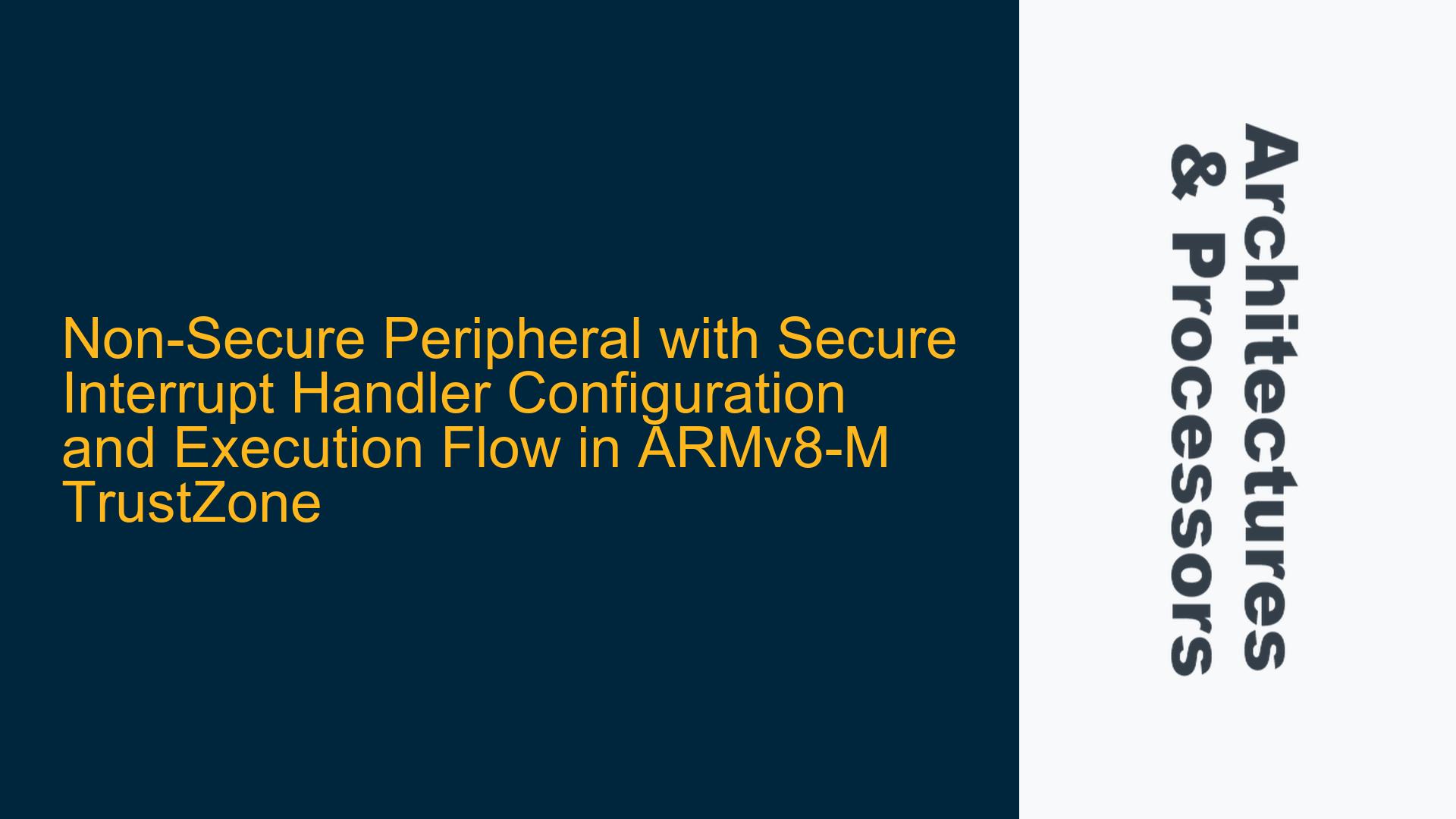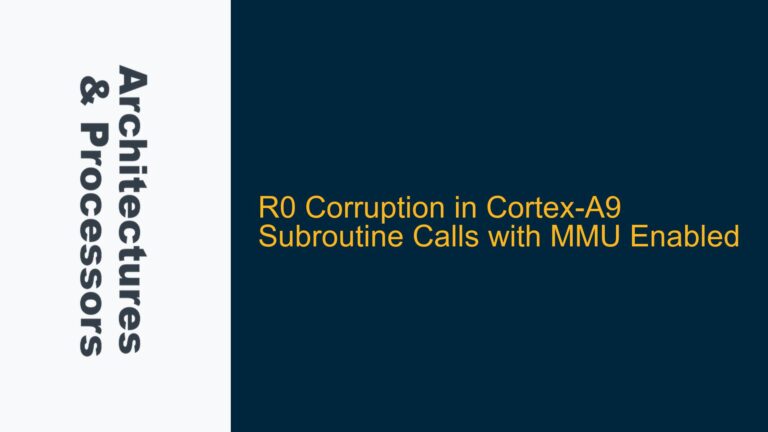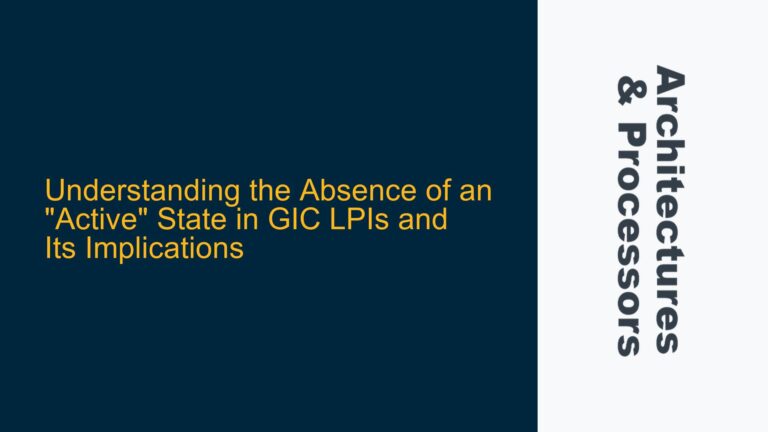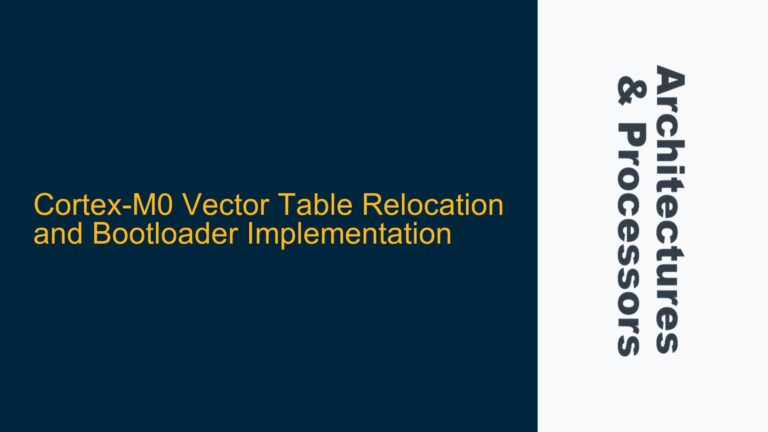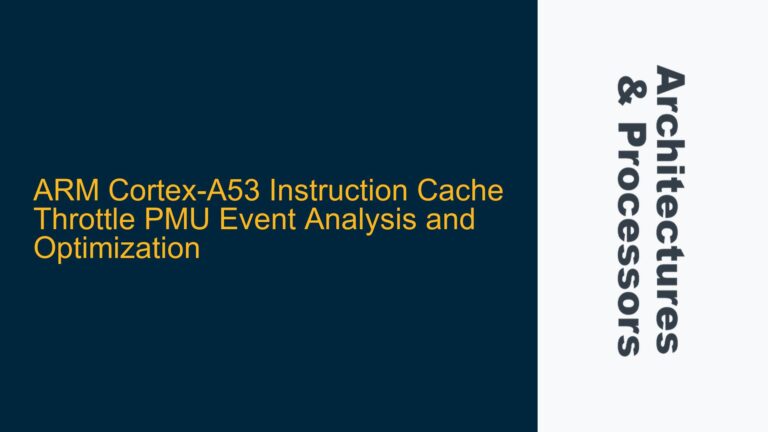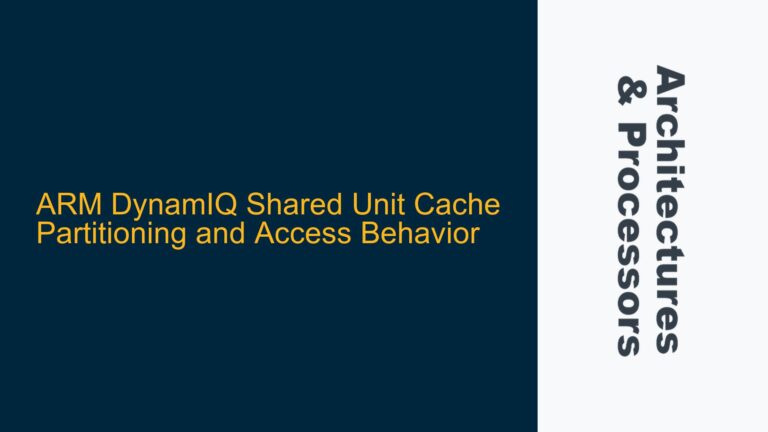Non-Secure Peripheral Configuration with Secure Interrupt Handler in ARMv8-M TrustZone
In ARMv8-M architectures with TrustZone security extensions, a common scenario arises where a peripheral is configured to operate in Non-Secure (NS) state while its associated interrupt handler is intended to execute in Secure (S) state. This configuration is technically feasible but introduces several architectural and operational considerations that must be carefully addressed to ensure system stability, security, and performance. The primary challenge lies in managing the interaction between Non-Secure and Secure states, particularly when the Non-Secure software has control over the peripheral but the Secure software handles its interrupts. This setup can lead to potential pitfalls such as interrupt flooding, privilege escalation, and mismatched state transitions during exception handling.
The ARMv8-M architecture provides mechanisms to configure peripherals and interrupts across security states, but these mechanisms require a deep understanding of the TrustZone security model, the Nested Vectored Interrupt Controller (NVIC), and the exception handling process. Specifically, the NVIC_ITNSn registers control whether an interrupt is treated as Secure or Non-Secure, while the EXC_RETURN value and the CONTROL.nPRIV bit govern the transition between security states and privilege levels during exception entry and exit.
Potential Risks of Non-Secure Peripheral Triggering Secure Interrupts
Configuring a Non-Secure peripheral with a Secure interrupt handler introduces several risks that must be mitigated to ensure robust system operation. One significant risk is the potential for Non-Secure software to trigger excessive Secure interrupts, leading to a degradation of service for other Secure operations. Since Secure interrupts have higher priority and can preempt Non-Secure execution, a malicious or poorly designed Non-Secure application could flood the Secure world with interrupts, causing resource exhaustion and impacting the responsiveness of critical Secure tasks.
Another risk arises from the dependency of Secure software on the Non-Secure peripheral. If the Secure software is waiting for an interrupt from the Non-Secure peripheral, but the Non-Secure software disables or misconfigures the peripheral, the Secure software may enter a deadlock or fail to proceed as expected. This scenario highlights the importance of carefully designing the interaction between Secure and Non-Secure states to avoid such dependencies or to implement safeguards that detect and handle peripheral misconfigurations.
Additionally, the transition between Secure and Non-Secure states during exception handling must be carefully managed to avoid privilege escalation or state mismatches. For example, if a Secure interrupt handler modifies the CONTROL.nPRIV bit or the EXC_RETURN value incorrectly, it could result in the Secure software inadvertently granting Non-Secure software elevated privileges or causing a mismatch between the stacked and unstacked process attributes during exception exit.
Implementing Secure Interrupt Handlers for Non-Secure Peripherals in ARMv8-M TrustZone
To implement a Secure interrupt handler for a Non-Secure peripheral in ARMv8-M TrustZone, several steps must be followed to ensure correct configuration, secure execution, and proper state transitions. The process involves configuring the NVIC, managing the CONTROL.nPRIV bit, and handling the EXC_RETURN value appropriately during exception entry and exit.
First, the peripheral must be configured to operate in Non-Secure state. This is typically done by setting the appropriate bits in the System Control Block (SCB) or the Security Attribution Unit (SAU) to designate the peripheral as Non-Secure. Next, the associated interrupt must be configured as Secure by clearing the corresponding bit in the NVIC_ITNSn register. This ensures that the interrupt is handled by the Secure exception handler rather than the Non-Secure handler.
When the Secure interrupt handler is invoked, it must preserve the context of the Non-Secure state and ensure that the transition back to Non-Secure state is performed correctly. This involves saving the Non-Secure registers, executing the interrupt service routine, and restoring the Non-Secure context before returning. The EXC_RETURN value plays a critical role in this process, as it determines the security state and execution mode to which the processor returns after the interrupt handler completes.
To return to Non-Secure privileged thread mode from a Secure interrupt handler, the handler must ensure that the CONTROL_NS.nPRIV bit is set correctly and that the EXC_RETURN value is configured to indicate a return to Non-Secure state with the appropriate privilege level. This can be achieved by modifying the CONTROL_NS register within the Secure interrupt handler and ensuring that the EXC_RETURN value is set to 0xFFFFFFFD, which indicates a return to Non-Secure thread mode using the Non-Secure Main Stack Pointer (MSP_NS).
The following table summarizes the key steps and considerations for implementing a Secure interrupt handler for a Non-Secure peripheral:
| Step | Description | Considerations |
|---|---|---|
| 1 | Configure the peripheral as Non-Secure using the SCB or SAU. | Ensure that the peripheral is accessible to Non-Secure software while maintaining Secure control over its interrupts. |
